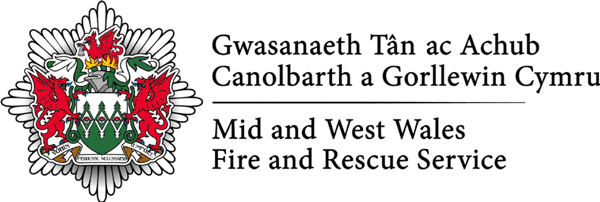As farms and properties in rural areas can be remote and isolated, Fire & Rescue Services can be faced with longer travel distances and access issues. This makes them more vulnerable to damage caused by fire.
We want to work with you to plan ahead by:
- Making sure that your Fire Risk Assessment is up to date
- Giving advice for developing a FIRE BOX at the property entrance containing details to help us such as location of water supplies, map of land, list of livestock, types, and locations of hazardous materials – this information will be really important to us
- Help you to identify areas to relocate livestock in your emergency plan
- Give guidance on keeping entrance and exit routes clear and ensure sufficient space for fire appliances to access if needed
What you can do to help us
- Consider whether a fire appliance can reach all areas of your property and is there hard access? There are a range that could be needed from rescue pumps to turntable ladders and water bowsers. A standard appliance can weigh more than 12 tonnes so pits and cattle grids can be an issue
- Clearly display your property sign at the entrance. This will help us find you quickly. Can you send someone to guide us in?
- Cutting back trees and vegetation can allow good access to your property.
- We sometimes use large quantities of water so it’s worth thinking about the run-off
- Do you have a static tank? A good location would be between 6 metres and 100 metres from the stock buildings
- Where is your nearest fire hydrant? is it clear of vegetation and in good working order?
- Are there other water supplies, such as ponds, lakes, and pools, are readily available for firefighters to take water from?
- Can you assist us by safely using farm machinery? It’s worth considering beforehand
- Don’t attempt to fight the fire unless its safe to do so
A fire will often create dark, smoky, and hot conditions that will be noisy and difficult to manage. We can assist you in planning for evacuation of livestock by understanding:
- Where your animals feel safe, as we know that some will try and return to their pen or stable during a fire. This makes is dangerous for them and the firefighters. Therefore, it’s good to know where you must have a refuge where they can be easily taken to and secured, out of harm’s way.
- Which way your gates are hung. Do they all open in the direction of travel to avoid animals becoming jammed?
- If there is a way that livestock can be evacuated upwind in the event of a fire?
- Your risk assessment, what type of animals do you have? Do they need to be separated? A distressed bull, for instance, will be a highly dangerous proposition to move and therefore you might consider housing him in a secure pen, away from any danger, to avoid moving him at all.
The Service can sometimes be called to deal with fires involving machinery, hay bales, fields and barns so its mutually beneficial to ensure that cleaning and maintenance is carried out regularly. Working hard for long periods can cause build up of dust and other substances which can clog up machines, overheat and catch fire.
NFU Mutual has produced a safety checklist for farmers to help prevent combine fires and accidents during harvest:
- Regularly clean out dust and chaff from hot spots in combines and balers.
- Switch off engines and ensure moving parts have stopped before clearing blockages or carrying out maintenance.
- Always stop to investigate hot-running engines or bearings.
- Put in place a system for keeping in contact with lone workers.
- Keep mobile phones on your person – not left in a tractor or pick up cab.
- Make sure that drivers are aware of the locations and heights of power lines and check that machines will safely pass under wires.
- Make sure there is a fire extinguisher on the combine – and that it is regularly maintained.
- Clean dust regularly from grain dryers – and ensure that all staff running the drier are fully trained and know what to do if fire breaks out.
- Ensure that fire extinguishers are readily accessible.
- Make sure ladders and platforms used for maintenance are in good condition and a safe system of work is in operation.
- Securely store gas cylinders/fuel storage tanks/old equipment to protect from theft and fire
- Store hay and straw in separate buildings at least 10 metres apart
- Store refuse securely, away from property and out of sight and dispose of regularly to prevent build-up, consider alternates to burning like composting
- Separate and secure flammables and agrochemicals with hazard warnings for firefighters
- Avoid storing flammables with vehicles or livestock
- Plan for busy periods when you have large amounts of crops
- Secure your storage areas and outbuildings with padlocks/locks
- Secure your boundaries and block gaps in walls, hedges or fences
- Fit external lighting to alert you to intruders or consider CCTV (to support a prosecution this needs to be 4 megapixels and have resolution of min. 1080p res)
- Report anti-social behaviour confidentially to CrimeStoppers on 0800 555111
- Join your local FARMWATCH scheme

